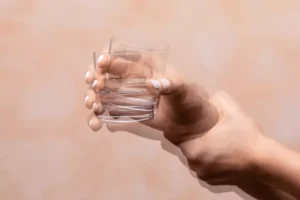
Since OUD is a chronic disease, medically managed withdrawal is like treating a heart attack without treating the patient’s underlying heart disease that caused the heart attack. It’s important to realize that people who stop using opioids, whether through a medically managed detoxification or on one’s own, frequently relapse and are at increased risk of overdose since they have lost their physical tolerance to opioids. A person may need a treatment approach that addresses both mental health and substance use disorders if both conditions are occurring together. The person’s environment and access to supportive family members and friends can also play important roles. Some patients will need to repeat therapy and may relapse many times before achieving long-term success. Practitioners may try different approaches for patients who continually relapse.
NALOXONE
Pregnant people with untreated opioid use disorder who do not receive appropriate prenatal care are at increased risk of serious and potentially =https://ecosoberhouse.com/ fatal pregnancy complications. Opioids are involved in the majority of deaths in the drug overdose crisis in the United States. This can cause severe brain damage or death.6 This is what happens during an opioid overdose. The first step in treating opioid abuse is someone recognizing that they have a problem and wants to quit using drugs. Sometimes this occurs as a result of a medical emergency from drug use.
Behavioral therapy

Despite the effectiveness of medications, they must be used in conjunction with appropriate psychosocial treatments. Though opioids can be prescribed by a doctor to treat pain, use of legally prescribed or illegal opioid medications may lead to an opioid use disorder. From 1999 to 2020, more than 800,000 Americans died from drug overdoses.
Medications for Opioid Use Disorder
- “Reasons for the increase in private market use may include accessing opioids that are not subsidized under the PBS, or efforts to avoid the PBS restrictions altogether.”
- Patients may consider other, non-prescribed sources to avoid withdrawal, which puts them at risk for overdose.
- Like other diseases, opioid use disorder has specific symptoms and a pattern of progression (it tends to get worse over time), and treatments may help bring it under control.
- This life-threatening drug misuse is even more dangerous if the pill is effective for a longer period of time.
- For more information about dispensation to patients who ran out of their medication early, please see the NABP’s Medication for Opioid Use Disorder Guideline.
To lessen the chance of developing a substance use disorder, follow your doctor’s orders carefully, making sure to only take the medication as prescribed. If you signs of opioid addiction are going to have a medical procedure, you should have a conversation with your physician beforehand about pain control. Talk to your children about how dangerous opioid drugs can be and why it’s important to use them (and all other medications) only as prescribed.
DOH’s FAQ about electronic prescribing of controlled substances may be helpful. Please note, any MOUD drug dispensed at a retail pharmacy is already collected by the PA PDMP. The above relates to medications dispensed in the context of a part 2 covered treatment program. Having buprenorphine and or methadone available at inpatient hospital pharmacies to initiate OUD treatment is a best practice.
Self-help programs for OUD

Medications and behavioral therapies can help people with OUD stop using opioids and support them in their recovery. Opioids are safest when used for three or fewer days to manage serious pain, such as pain that follows surgery or a bone fracture. If you need opioids for severe pain, work with your healthcare professional to take the lowest dose possible, for the shortest time needed, exactly as prescribed.

Historical misuse
Using any opioids for their euphoric effect, even for a short time, raises the risk of substance use disorder, overdose and death. Preventing overdose death and finding treatment options are the first steps to recovery. Treatment may save a life and can help people struggling with opioid addiction get their lives back on track by allowing them to counteract addiction’s powerful effects on their brain and behavior. The overall goal of treatment is to help people regain their health and social function. Treatment may save a life and can help people struggling with opioid use disorder get their lives back on track by allowing them to counteract addiction’s powerful effects on their brain and behavior. Evidence-based approaches to treating opioid use disorder include medications and combining medications with behavioral therapy.
- It is a relapsing disorder, which means that if people who have OUD stop using opioids, they are at increased risk of reverting to opioid use, even after years of abstinence.
- Such abnormalities can produce craving that leads to relapse months or years after the individual is no longer opioid dependent.
- Prescribers, pharmacists, and pharmacy teams are encouraged to use their best clinical judgment and consider the patient’s clinical situation, functioning, and life context when making individual prescribing or dispensing decisions.
- Further prolonged use produces more long-lasting changes in the brain that may underlie the compulsive drug-seeking behavior and related adverse consequences that are the hallmarks of addiction.
- Talk with your doctor about the pros and cons of using opioids for pain relief.
Suboxone is a medication that combines naltrexone and buprenorphine as part of a structured detoxification program. Some individuals are treated on an outpatient basis through their primary care provider or through a specialized addiction treatment center. Addiction is a chronic disease; be sure to ask your doctor about the risk of returning to use and overdose. During treatment, the treatment team may include an opioid addiction treatment medication, known as medication-assisted treatment (MAT). Once you complete opioid detox, the next step is to transition into a rehab program.
- To help prevent prescription drug misuse and protect the health and safety of our community, the PA PDMP collects information on all filled prescriptions for controlled substances.
- Treatment for OUD often requires continuing care to be effective, as OUD is a chronic condition with the potential for both recovery and relapse.
- When used as directed by your doctor, opioid medicines safely help control severe pain, such as pain you may have after surgery.
- Long-term opioid use causes substantial changes to the brain and other organs.
- At FDA, we’re working across the full scope of our regulatory obligations to impact this crisis.
You can also develop physical dependence—meaning you have withdrawal symptoms when the medication is stopped. Medications used in the treatment of opioid use disorder support a person’s recovery by helping to normalize brain chemistry, relieving cravings, and in some cases preventing withdrawal symptoms. The choice to include medication as part of recovery is a personal medical decision, but the evidence for medications to support successful recovery is strong. Evidence-based approaches to treating opioid use disorder include medications for opioid use disorder (MOUD) and combining medications with behavioral therapy.
Deaths from opioid misuse have increased sharply in the last 20 years; over 68,000 people died from opioid overdose in 2020 alone. Talk with a doctor to find out what types of treatments are available in your area and what options are best for you and/or your loved one. Addiction is a treatable, chronic disease; be sure to ask your doctor about the risk of returning to drug use and overdose. Medications can block the effect of opioids, as well as control withdrawal and craving, and behavioral therapy and counseling can help people learn to cope with and relate to opioids in healthy ways. People who are in treatment for their OUD are often able to improve many aspects Oxford House of their social functioning and health. When opioids enter the body, they interact with opioid receptors in the brain, producing a number of physiological responses, including pain relief.